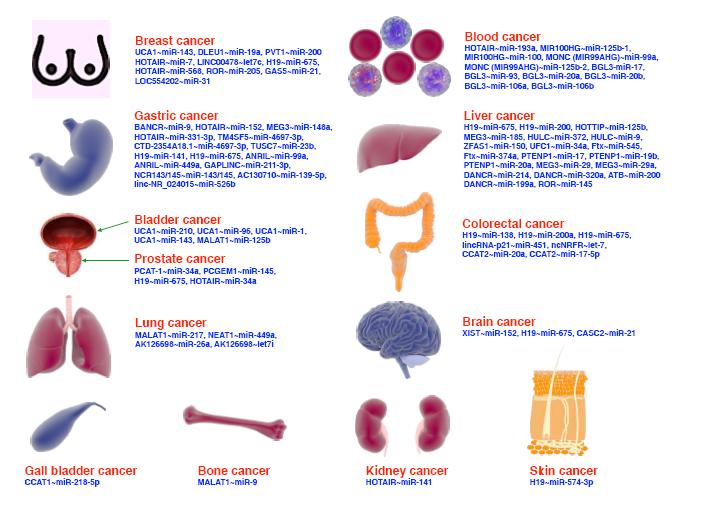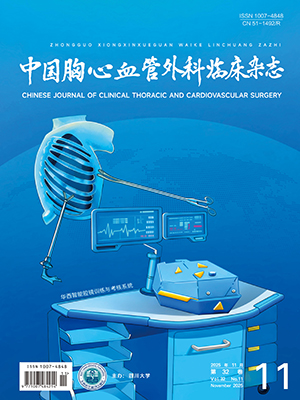| 1. |
Ajani JA, D'Amico TA, Bentrem DJ, et al. Esophageal and esophagogastric junction cancers, version 2. 2019, NCCN clinical practice guidelines in oncology. J Natl Compr Canc Netw, 2019, 17(7): 855-883.
|
| 2. |
Mboumi IW, Reddy S, Lidor AO. Complications after esophagectomy. Surg Clin North Am, 2019, 99(3): 501-510.
|
| 3. |
Chen K. Definition, classification and prediction of complications related to esophageal resection. Zhonghua Wei Chang Wai Ke Za Zhi, 2015, 18(9): 855-859.
|
| 4. |
Seesing MFJ, Gisbertz SS, Goense L, et al. A propensity score matched analysis of open versus minimally invasive transthoracic esophagectomy in the Netherlands. Ann Surg, 2017, 266(5): 839-846.
|
| 5. |
Fransen LFC, Berkelmans GHK, Asti E, et al. The effect of postoperative complications after minimally invasive esophagectomy on long-term survival: An international multicenter cohort study. Ann Surg, 2021, 274(6): e1129-e1137.
|
| 6. |
Rutegård M, Lagergren P, Rouvelas I, et al. Intrathoracic anastomotic leakage and mortality after esophageal cancer resection: A population-based study. Ann Surg Oncol, 2012, 19(1): 99-103.
|
| 7. |
Messager M, Warlaumont M, Renaud F, et al. Recent improvements in the management of esophageal anastomotic leak after surgery for cancer. Eur J Surg Oncol, 2017, 43(2): 258-269.
|
| 8. |
Zafirellis KD, Fountoulakis A, Dolan K, et al. Evaluation of POSSUM in patients with oesophageal cancer undergoing resection. Br J Surg, 2002, 89(9): 1150-1155.
|
| 9. |
Haga Y, Wada Y, Takeuchi H, et al. Prediction of anastomotic leak and its prognosis in digestive surgery. World J Surg, 2011, 35(4): 716-722.
|
| 10. |
Fabbi M, Hagens ERC, van Berge Henegouwen MI, et al. Anastomotic leakage after esophagectomy for esophageal cancer: Definitions, diagnostics, and treatment. Dis Esophagus, 2021, 34(1): doaa039.
|
| 11. |
Moon SW, Kim JJ, Cho DG, et al. Early detection of complications: Anastomotic leakage. J Thorac Dis, 2019, 11(Suppl 5): S805-S811.
|
| 12. |
Verstegen MHP, Bouwense SAW, van Workum F, et al. Management of intrathoracic and cervical anastomotic leakage after esophagectomy for esophageal cancer: A systematic review. World J Emerg Surg, 2019, 14: 17.
|
| 13. |
Noble F, Curtis N, Harris S, et al. Risk assessment using a novel score to predict anastomotic leak and major complications after oesophageal resection. J Gastrointest Surg, 2012, 16(6): 1083-1095.
|
| 14. |
Bundred J, Hollis AC, Hodson J, et al. Validation of the NUn score as a predictor of anastomotic leak and major complications after esophagectomy. Dis Esophagus, 2020, 33(1): doz041.
|
| 15. |
Van Daele E, Van de Putte D, Ceelen W, et al. Risk factors and consequences of anastomotic leakage after Ivor Lewis oesophagectomy. Interact Cardiovasc Thorac Surg, 2016, 22(1): 32-37.
|
| 16. |
Huang J, Zhou Y, Wang C, et al. Logistic regression analysis of the risk factors of anastomotic fistula after radical resection of esophageal-cardiac cancer. Thorac Cancer, 2017, 8(6): 666-671.
|
| 17. |
Fjederholt KT, Okholm C, Svendsen LB, et al. Ketorolac and other NSAIDs increase the risk of anastomotic leakage after surgery for GEJ cancers: A cohort study of 557 patients. J Gastrointest Surg, 2018, 22(4): 587-594.
|
| 18. |
Gao C, Xu G, Wang C, et al. Evaluation of preoperative risk factors and postoperative indicators for anastomotic leak of minimally invasive McKeown esophagectomy: A single-center retrospective analysis. J Cardiothorac Surg, 2019, 14(1): 46.
|
| 19. |
张磊, 李辉, 侯生才, 等. 基于累积评分的食管癌术后吻合口瘘的风险分级系统. 中华胸部外科电子杂志, 2016, 3(1): 15-20.Zhang L, Li H, Hou SC, et al. An aggregate score system to stratify the risk of anastomotic leakage after esophageal carcinoma surgery. Chin J Thorac Surg (Electronic Edition), 2016, 3(1): 15-20.
|
| 20. |
Schweigert M, Solymosi N, Dubecz A, et al. Current outcome of esophagectomy in the very elderly: Experience of a German high-volume center. American Surgeon, 2013, 79(8): 754-763.
|
| 21. |
Markar SR, Arya S, Karthikesalingam A, et al. Technical factors that affect anastomotic integrity following esophagectomy: Systematic review and meta-analysis. Ann Surg Oncol, 2013, 20(13): 4274-4281.
|
| 22. |
Urschel JD. Esophagogastrostomy anastomotic leaks complicating esophagectomy: A review. Am J Surg, 1995, 169(6): 634-640.
|
| 23. |
Pierie JP, de Graaf PW, van Vroonhoven TJ, et al. Healing of the cervical esophagogastrostomy. J Am Coll Surg, 1999, 188(4): 448-454.
|
| 24. |
邱龙, 李向楠, 赵松, 等. 食管癌术后颈部食管胃吻合口瘘的危险因素分析. 中华消化外科杂志, 2017, 16(5): 483-489.Qiu L, Li XN, Zhao S, et al. Risk factors analysis of cervical esophagogastric anastomotic fistula after esophagectomy of esophageal cancer. Chin J Dig Surg, 2017, 16(5): 483-489.
|
| 25. |
Cooke DT, Lin GC, Lau CL, et al. Analysis of cervical esophagogastric anastomotic leaks after transhiatal esophagectomy: Risk factors, presentation, and detection. Ann Thorac Surg, 2009, 88(1): 177-184.
|
| 26. |
Okamura A, Watanabe M, Imamura Y, et al. Preoperative glycosylated hemoglobin levels predict anastomotic leak after esophagectomy with cervical esophagogastric anastomosis. World J Surg, 2017, 41(1): 200-207.
|
| 27. |
Honda M, Kuriyama A, Noma H, et al. Hand-sewn versus mechanical esophagogastric anastomosis after esophagectomy: A systematic review and meta-analysis. Ann Surg, 2013, 257(2): 238-248.
|
| 28. |
Deng XF, Liu QX, Zhou D, et al. Hand-sewn vs linearly stapled esophagogastric anastomosis for esophageal cancer: A meta-analysis. World J Gastroenterol, 2015, 21(15): 4757-4764.
|
| 29. |
Liu QX, Qiu Y, Deng XF, et al. Comparison of outcomes following end-to-end hand-sewn and mechanical oesophagogastric anastomosis after oesophagectomy for carcinoma: A prospective randomized controlled trial. Eur J Cardiothorac Surg, 2015, 47(3): e118-e123.
|
| 30. |
Warschkow R, Tarantino I, Ukegjini K, et al. Diagnostic study and meta-analysis of C-reactive protein as a predictor of postoperative inflammatory complications after gastroesophageal cancer surgery. Langenbecks Arch Surg, 2012, 397(5): 727-736.
|
| 31. |
Aiolfi A, Asti E, Rausa E, et al. Use of C-reactive protein for the early prediction of anastomotic leak after esophagectomy: Systematic review and Bayesian meta-analysis. PLoS One, 2018, 13(12): e0209272.
|
| 32. |
Kano K, Aoyama T, Nakajima T, et al. Prediction of postoperative inflammatory complications after esophageal cancer surgery based on early changes in the C-reactive protein level in patients who received perioperative steroid therapy and enhanced recovery after surgery care: A retrospective analysis. BMC Cancer, 2017, 17(1): 812.
|




